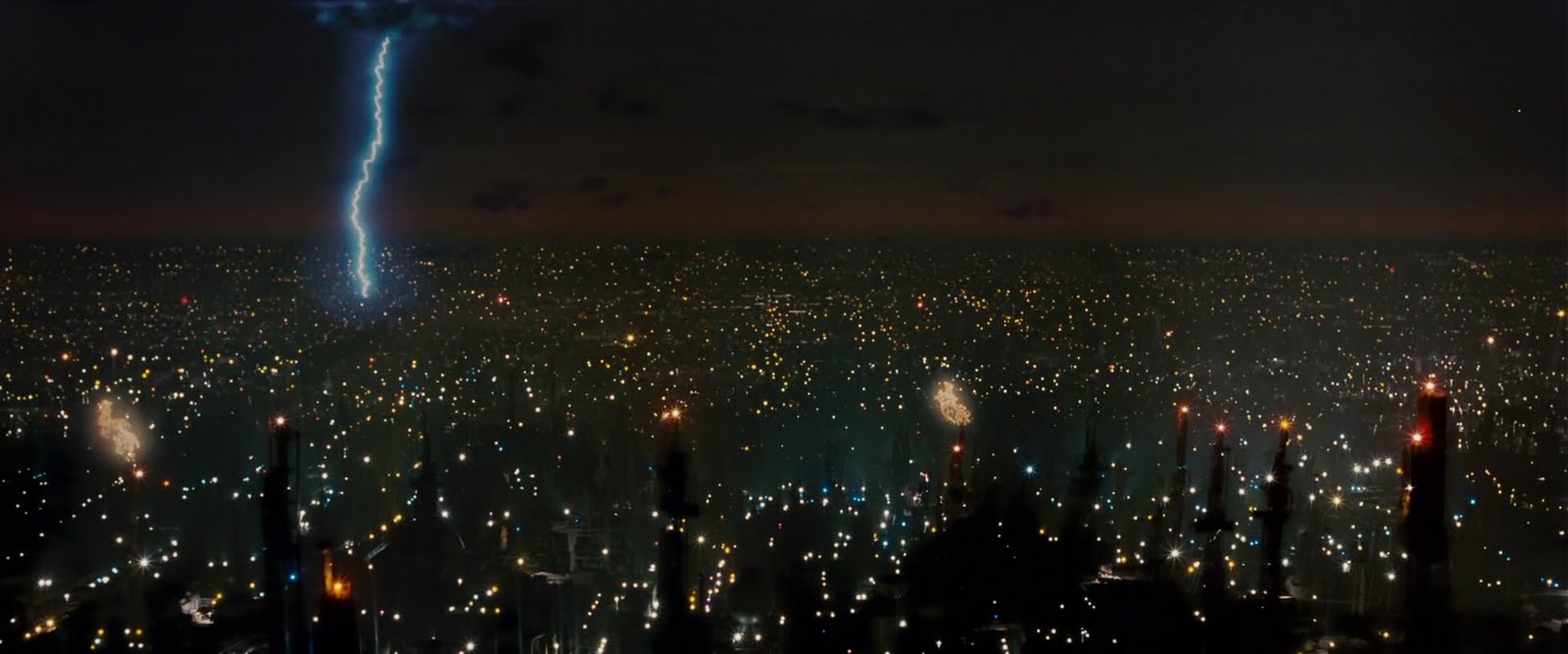Blade Runner[i] follows Harrison Ford as Rick Deckard, an ex-cop and Blade
Runner, tasked with hunting down four fugitive replicants. Replicants are
bio-engineered androids designed to imitate humans and perform work such as
manual labor, entertainment, and even combat, which makes the Blade Runner's
job of "retiring" them a particularly difficult situation to handle.
The year is 2019 (almost there!) and the city of Los Angeles is
a sprawling urban megaplex packed full of tall skyscrapers, flashing
fires, and endless lights, so it’s not very different from Los Angeles today (2
points for easy jokes).
The production values[iii] behind Los Angeles 2019
are beautifully dark. The night sky is lit up with the “natural” lighting
emanating from the only source, the futuristic cityscape below, effectively
acting as a flood light. The more intimate scenes are filled with low-key
lighting, making high contrast between lights and dark. All of these lighting
tropes are a clear indicator of Blade
Runner’s film noir roots.
Furthering the connection between Blade Runner and that particular genre is the main plot following a
rugged detective struggling to solve the case in the gritty world of the urban
streets. The scale between Deckard and the gigantic looming towers plastered
with advertisements creates a sense of being trapped, crowded, and watched;
this is constantly reinforced through the dense crowds of people who flock the
street shops and dark neighborhoods Deckard investigates.
Another great example of lighting and set design in the movie
comes when Sebastian (William Sanderson) leads Pris (Daryl Hannah) to his
apartment. The building is abandoned by all except Sebastian and the robotic
friends he engineered; the dilapidated staircase and exterior hallways are lit
up solely by the roving spotlights creeping in through windows and holes in the wall.
Sebastian’s apartment is littered with toys and other mechanical things, all
covered in dust and cobwebs, which reinforces Sebastian’s character as an
eccentric inventor.
On the subject of Pris, the makeup she applies after being allowed
into Sebastian’s apartment is haunting. The combination of her short blonde
hair puffed up around her head, pale white face, and black eye shadow creates
an image of a clown. This makes sense, since she was designed to act as an
entertainer and is an excellent acrobat; this makeup helps her hide among the
toys when Deckard comes to investigate the apartment later in the film.
 |
| Not freaky at all[iv] |
I was surprised to find out that it was Edward James Olmos who
played Detective Gaff, the man who initially brought Deckard to the police
station and who always made little origami sculptures. I didn’t recognize
Olmos, although really the only familiarity I have with him are the few
episodes of Battlestar Galactica I’ve
seen. This type of role Olmos fills in this movie is a supporting one, but
given the length of his career at this point, I would not hesitate from calling
it a cameo as well.
20 years later, and he still looks
basically the same[v]
[i] Blade Runner Dir. Ridley Scott Prod.
Michael Deeley. Warner Bros. 1982
[ii] http://www.bandejadeplata.com/wp-content/uploads/2012/09/Blade.Runner.-vista-area-ciudad.jpg
[iii]
Barsam, Richard, and Dave Monahan. Looking
At Movies: An Introduction to Film. 4th ed. New York: W.W.
Norton & Company, 2013. Print
[iv] http://www.devo.com/bladerunner/sector/7/pics/pris_hiding.jpeg
[v] http://www.prophouse2000.com/gaff6.jpg
& http://thetimewarriors.files.wordpress.com/2011/05/edwardjamesolmosbsgsequels-thumb-500x332-47370.jpg


No comments:
Post a Comment